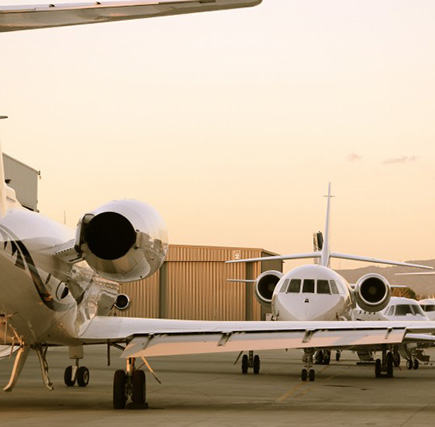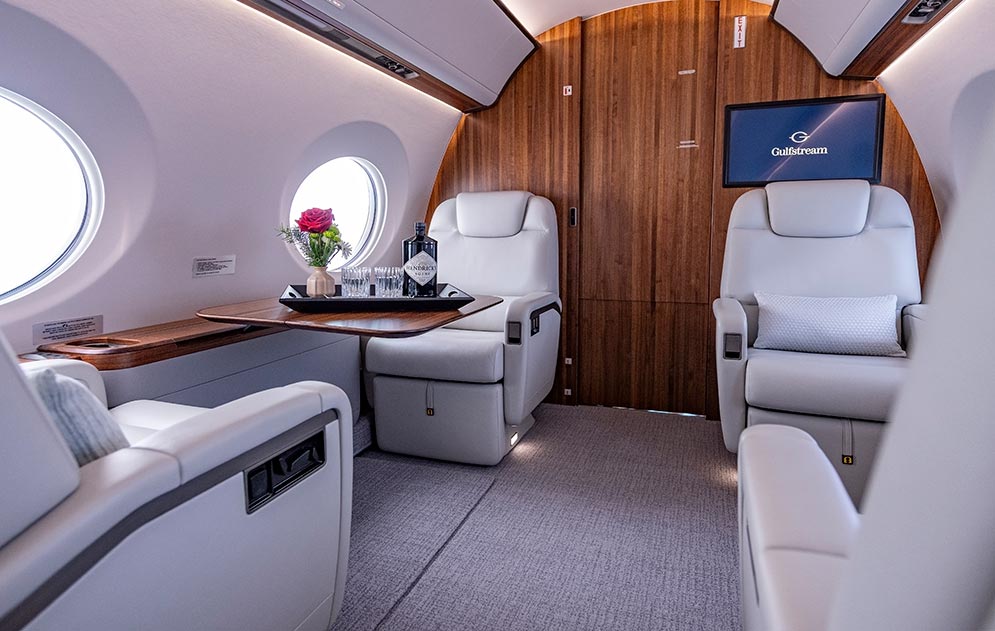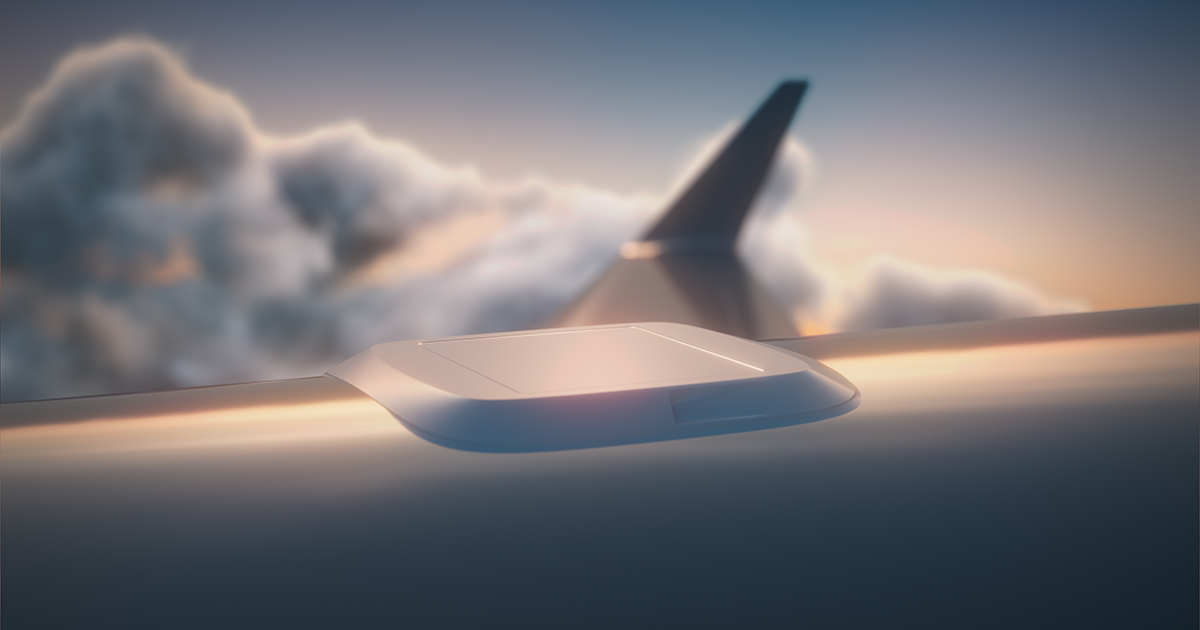
Virtues and Advantages of Buying a Used Business Jet
By Clay Lacy In Pro Pilot Magazine
“Older Bizjets” July 2000
ATP/CFII/Helo/Sea.
Gulfstream II/III/IV,
Learjet series, HS125,
Boeing 727/747 and
25 misc type ratings
While new is always better, there are great buys available in used turbojet aircraft which allow companies to move into jets without delay.
Now, don’t get me wrong. These new aircraft are wonderful. They’re very fuel-efficient, they’ve got much better range than early-generation business jets and they’re Stage III noise compliant. However, in terms of actual performance, many of the new aircraft are no better than, and in some cases lag behind, my 1964 Lear 24, 1978 Gulfstream IISP or 1967 Boeing 727-100.
BUYING THE USED BUSINESS JET
There are certainly many good reasons to buy new business jets—if you can afford it why would you not buy new? The reason older aircraft are purchased is usually that they’re within an operator’s budget and they allow a company to get into a business jet right away without any real sacrifice in performance.
About half of the 30-plus jets we are now operating at Clay Lacy Aviation are pre-1980, and our experience has been that older aircraft are just as reliable and safe, and need no more maintenance than newer jets.
Consider the difference between a 1960s-era Lear 24, Gulfstream II or Boeing 727 and a 1999 model Lear 31, Gulfstream IVSP or Boeing BBJ. There’s a lot less difference in terms of style and performance than there is between a 1968 automobile and a current year model. Business aircraft, along with airline equipment, have remained somewhat stagnant. There haven’t been any significant breakthroughs over the past 35 years, and airplanes are built so well that they just don’t wear out.
However, the 1960s-era aircraft flying today would all be in a scrapheap today if someone had found a way to double the aircraft’s speed. The values of older aircraft would have been so greatly diminished with the availability of supersonic business jets that they’d be obsolete and cut up for scrap metal.
NEW VS OLD
The only significant difference between older and newer business aircraft has to do with advanced, quieter and more fuel-efficient engines. Today you can fly nonstop from North America to Asia with a BBJ, Bombardier Global Express or Gulfstream V, and you can fly to Europe from most places in the US with a Challenger 604, a Falcon 900EX or a GIVSP. These are wonderful range advantages that we’re able to enjoy thanks to significant engine technology improvements.
At Clay Lacy Aviation we have a base customer who is trading up from a 727 to a new BBJ to save a fuel stop between VNY and Europe. We’re also managing a new GV which gives its owner, Allen Paulsen, a 6500-nm nonstop range. Our clients love their new aircraft and they’re in a position where they can afford the best that the business aviation market has to offer. However, you do pay a price to save extra fuel stops.
COST OF CAPITAL
Older aircraft of equivalent performance can be had for a fraction of the price of their newer alternatives. The tradeoff is that the older aircraft burn more fuel and don’t have the range of the newer models. DOCs do not differ much between new and older aircraft but cost of capital is a significant factor. If you assume the cost of capital at about 7% the difference between a $1 million Lear 25 and a $6 million Lear 31, which both have the same range and performance, is such that you could pay for 580 hrs of operation of the Lear 25 (at a $600/hr DOC) just from the difference in cost of capital.
Likewise, if you compare a $6 million GII with a $28 million GIV-SP the difference in the annual cost of capital—about $1,540,000— would pay for over 1000 hrs of GII operations. The same comparison can be made between a corporate- configured Boeing 727, worth about $10 million, and a $43 million BBJ. You’ll make a few extra fuel stops with the older aircraft but the cruise altitude, climb, cruise speed and reliability of these aircraft—built 30-plus years apart— are going to be the same. Again, new is always better if you can afford it. However, you can buy a significant amount of transportation for a comparative bargain in terms of capital investment, and you don’t have to sacrifice performance when you buy used.
UPGRADING THE OLDER BUSINESS JET
Upgrading an older business jet is often a very viable option for operators. EFIS avionics on newer-generation aircraft are a plus, but you can affordably duplicate this front panel technology in older aircraft. We have a based client with a 1978 Citation II who’s put every panel upgrade into the aircraft that’s possible, including EFIS, TCAS II and moving maps. In the GIISP we operate at Clay Lacy Aviation we’ve added 3 new long-range navs, an Airshow system and TCAS. Back in the 80s we installed the first 5-tube EFIS system ever put in a Lear 35 along with an FMS. These are all surprisingly affordable upgrades and they give you the front office equivalent of a new business jet.
There have been several successful re-engine programs which have made dramatic improvements to the range of older business jets. Re-engining by Honeywell (formerly Garrett/AlliedSignal) of the JetStar and the early Hawker series, and its ongoing program on the Falcon 20, have been very successful. For an investment of $4.1 million you can have new engines on your Falcon 20 and almost double the range of the aircraft. Honeywell is working now on a program to re-engine the Falcon 50. And there has been talk of using other manufacturers’ turbofans for re-engining older GIIs and GIIIs, although this project might not receive Gulfstream’s cooperation since Gulfstream continues to tout the fact that they only use Rolls-Royce engines. If you were to install more modern, fuel-efficient engines on your old GII or GIII the best estimate is that it would cost you close to $10 million, but it would give your GII or GIII the range and performance of a GIV.
While all these re-engine programs increase range and fuel specifics and give you a Stage III aircraft, there’s no easy mod to increase speed.
One of the best modification programs currently available is the Aviation Partners Blended Winglet program for the GII and the BBJ. These advanced-technology wide sweep winglets make the greatest improvement in performance and range of any single mod I’ve ever seen without changing the engines. While aerodynamic improvement mods typically give you 1 to 2% advantage, Aviation Partners winglets give a 6 to 7% improvement.
New Stage II hushkits are now surfacing for at least 3 older business jets. Two systems—Stage III Technologies and Really Quiet LLC—are close to certification for the Gulfstream II and III, and there’s a new Stage III system for the 20 series Lear which costs under $150,000 but you lose reversers. Raisbeck Engineering has come up with a simple and effective Stage III hush kit for the Boeing 727, and we’ve recently installed this on our corporate-configured 727-100 at Clay Lacy Aviation.
I’ve been looking at a program to re-engine 20 series Lears with Williams FJ44 turbofans and replace the tip tanks with Aviation Partners Blended Winglets. This would probably be a $2 million modification, but in many respects it would give you almost a new aircraft. To be competitive, it needs to be a single pilot aircraft and that may be possible. I feel that by removing the tip tanks and replacing them with winglets the overall stability of the aircraft would increase, and you’d stand a good chance of single-pilot certification.
Refurbishing the interior of an older aircraft can make it look like new and you’ll usually get the investment back in resale value. For about $50,000 to $80,000 you can do a nice refurb on an older Lear. The cabin of a GII can be beautifully redone for $300,000 and for $500,000 you can have it like new.
RELIABILITY AND MAINTENANCE
I’ve found very little difference in the reliability and cost of maintenance of older aircraft compared to newer models. The airframes of used business jets are built so well that if they’re maintained properly, and not allowed to corrode, they’ll last forever. Many airliners flying today are up in the 70,000–80,000 hr bracket, and properly maintained corporate airframes will last just as long. If you follow the factory maintenance schedule the plane doesn’t get older—it gets better with age.
When buying an older aircraft a thorough pre-buy is essential. You have to be much more careful analyzing the maintenance records with used aircraft. You want to be sure the aircraft has been maintained on a factory or equivalent program.
In terms of safety I don’t think there is any difference between an older and a newer business jet. The key in any flight operation is that pilots must be on guard to avoid complacency. Whenever you get used to flying a type of aircraft, whether it’s an older or a newer model, you can start to feel too much at home. Jet aircraft, while they are extremely reliable, still require careful procedures and systems monitoring.
SUMMARY
Buying and operating an older business jet can be a tremendous value for the investment. In today’s hi-tech world it’s rare when you can buy any 35-year-old piece of equipment and receive an equivalent level of performance and reliability as a new version at 5 to 8 times the price. However, with an upgraded aircraft it is possible.
The price of these older aircraft has come up recently. You can no longer buy a Lear 24 for $300,000 or a good GII for $2.5 million. A Lear 24, Lear 25 and a GII will run you closer to $600,000, $1 million and $6 million respectively these days, but I believe that prices of older business jets have leveled off for the time being.
With the various upgrade programs on the market, including Stage III hushkits, aerodynamic improvements and options for re-engining, today’s older aircraft have an operational and economic life of many more years. I expect to be operating my Lear 24s 10 years from now, and we’ll probably be flying our Aviation Partners Blended Winglet equipped IISP for another 20 years.
In most cases older aircraft just keep on getting better. The only thing that will render them obsolete is significant performance and speed improvements that would be ushered in by a new generation of practical supersonic business jets. We’ve gone almost 40 years riding on business jet performance levels Bill Lear introduced back in the early 60s. However, some day—and my prediction is within 10 to 15 years— we’ll be flying supersonic.
For more information about aircraft ownership and Clay Lacy Aviation’s suite of professional management services, email or call one of our aircraft experts.
Joseph Barber
jbarber@claylacy.com
805.915.9980
Richard Hodkinson
rhodkinson@claylacy.com
818.398.1030


